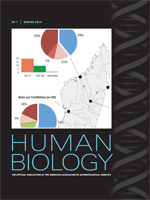To gain insight into the social organization of a population associated with the Dawenkou period, we performed ancient DNA analysis of 18 individuals from human remains from the Fujia site in Shandong Province, China. Directly radiocarbon dated to 4800–4500 cal BP, the Fujia site is assumed to be associated with a transitional phase from matrilineal clans to patrilineal monogamous families. Our results reveal a low mitochondrial DNA diversity from the site and population. Combined with Y chromosome data, the pattern observed at the Fujia site is most consistent with a matrilineal community. The patterns also suggest that the bond of marriage was de-emphasized compared with the bonds of descent at Fujia.
How to translate text using browser tools
1 January 2015
Low Mitochondrial DNA Diversity in an Ancient Population from China: Insight into Social Organization at the Fujia Site
Yu Dong,
Chunxiang Li,
Fengshi Luan,
Zhenguang Li,
Hongjie Li,
Yinqiu Cui,
Hui Zhou,
Ripan S. Malhi
ACCESS THE FULL ARTICLE

Human Biology
Vol. 87 • No. 1
January 2015
Vol. 87 • No. 1
January 2015
ancient DNA
kinship
MATRILINEAL
mtDNA
Y CHROMOSOME




